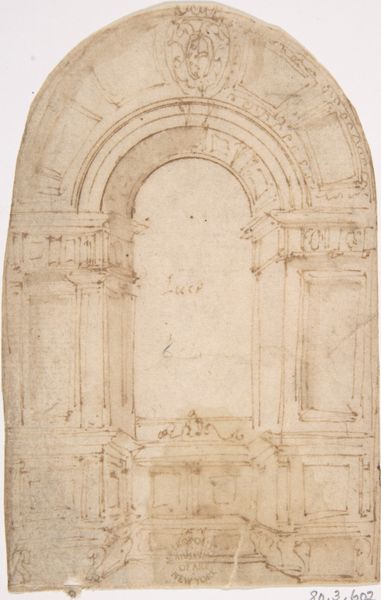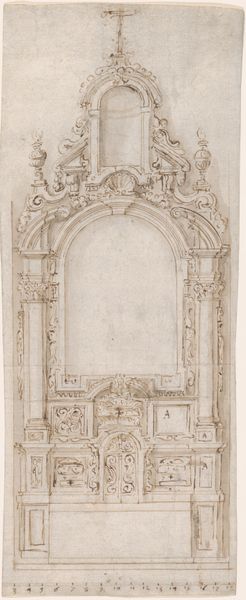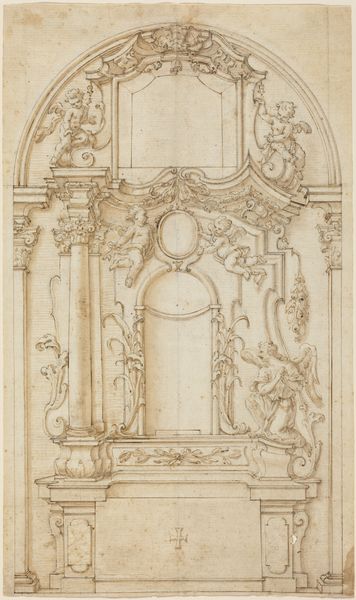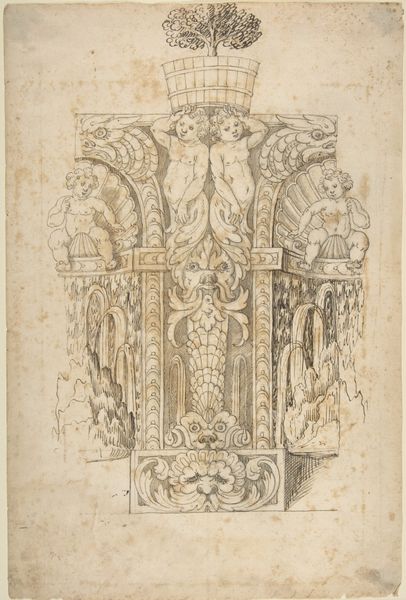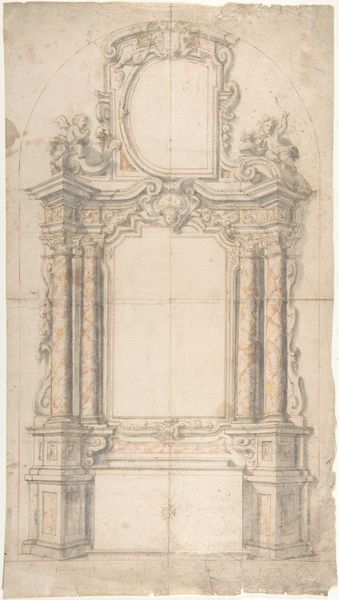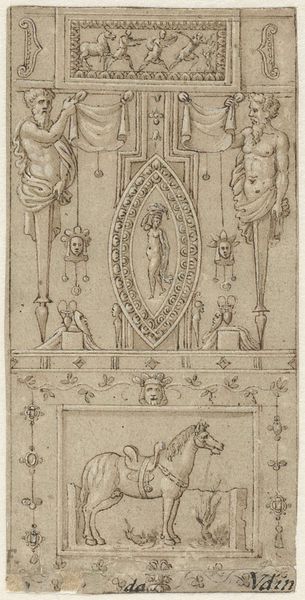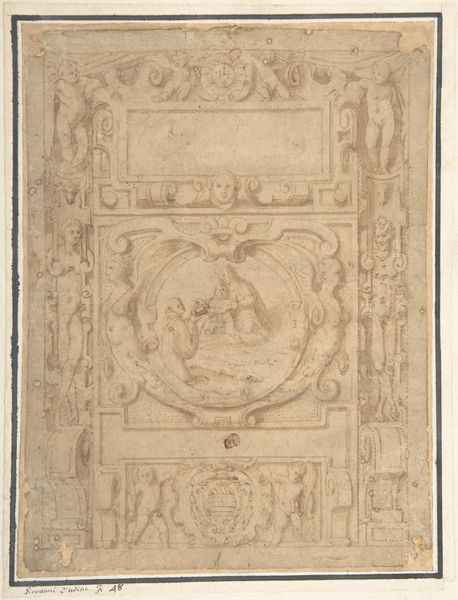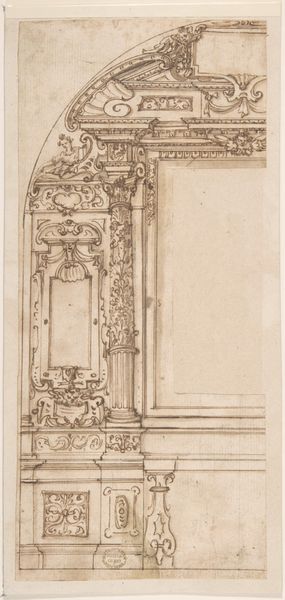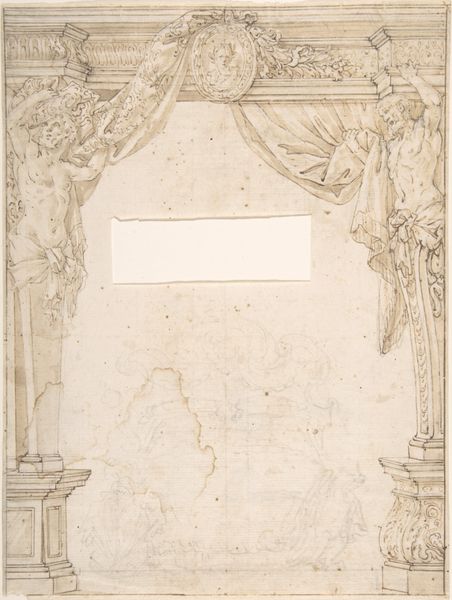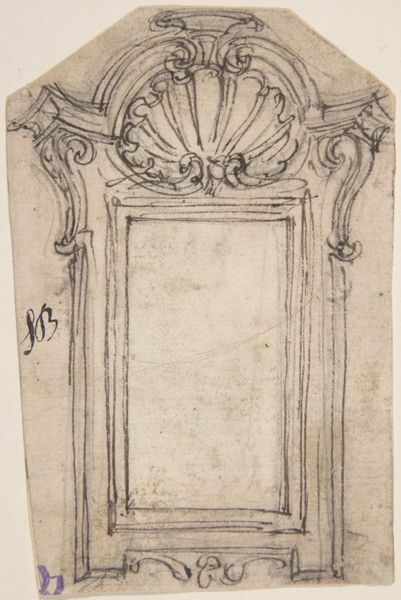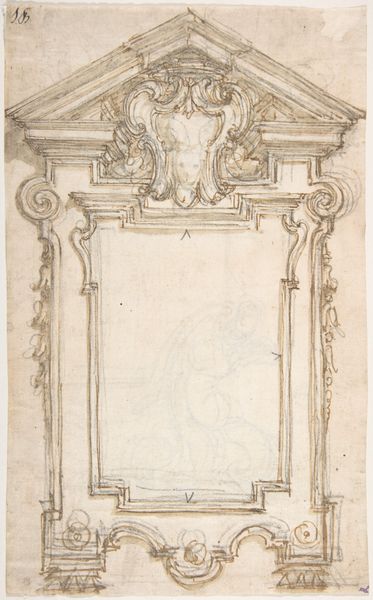
drawing, print, paper, ink
#
drawing
#
toned paper
# print
#
charcoal drawing
#
paper
#
11_renaissance
#
ink
#
italian-renaissance
Dimensions: 5 x 3-1/2 in. (12.7 x 8.9 cm)
Copyright: Public Domain
Curator: The delicate lines create such a compelling sense of depth and architectural space, don't you think? Editor: Indeed. There's a hushed, preparatory air to this piece. Let's contextualize; we're looking at "Design for a Wall with Two Windows," a drawing created between 1500 and 1600 by an anonymous artist. It’s housed right here at the Metropolitan Museum of Art. Curator: Look at the use of ink and charcoal on toned paper; that contrasting application offers subtle detail. I'm curious about the intended function. Was this purely aesthetic, or part of a larger commission? Editor: The materiality speaks volumes, I believe. Cheap materials suggest preliminary work, which hints to a wider economic setting; most likely, the creation was a part of securing and fulfilling commissioned designs, revealing its relation to craft and commercial trades in the Renaissance. Curator: Good point. And note the structural elements of the window design itself: the arched top, the fluted pilasters, and the decorative frieze above. A beautiful harmony and proportion are carefully applied, even in this rough concept, aren’t they? Editor: The handwriting and words like 'Luce' suggesting placement or an instruction of where lighting sources might impact perception of surfaces also feels like this could function as documentation that connects artisanal expertise to the artist, an interaction crucial to production. Curator: It brings us back to a critical examination of the production's design: the artistic concept and the practical work of bringing it into material form. So, would you say you have a stronger appreciation now for the artistic and, as you highlighted, socio-economic aspects of art production back then? Editor: Absolutely. Thinking of art not just as object but rather through a more granular view focused on its means of material execution brings forth considerations that alter traditional frameworks within which artworks are often conceived. Curator: A powerful reminder that even seemingly simple designs can unlock multiple interpretations and perspectives through formal qualities and historical contexts. Editor: Indeed, there's a world beyond what immediately meets the eye, accessible if you center the labor and material circumstances that define art creation.
Comments
No comments
Be the first to comment and join the conversation on the ultimate creative platform.
